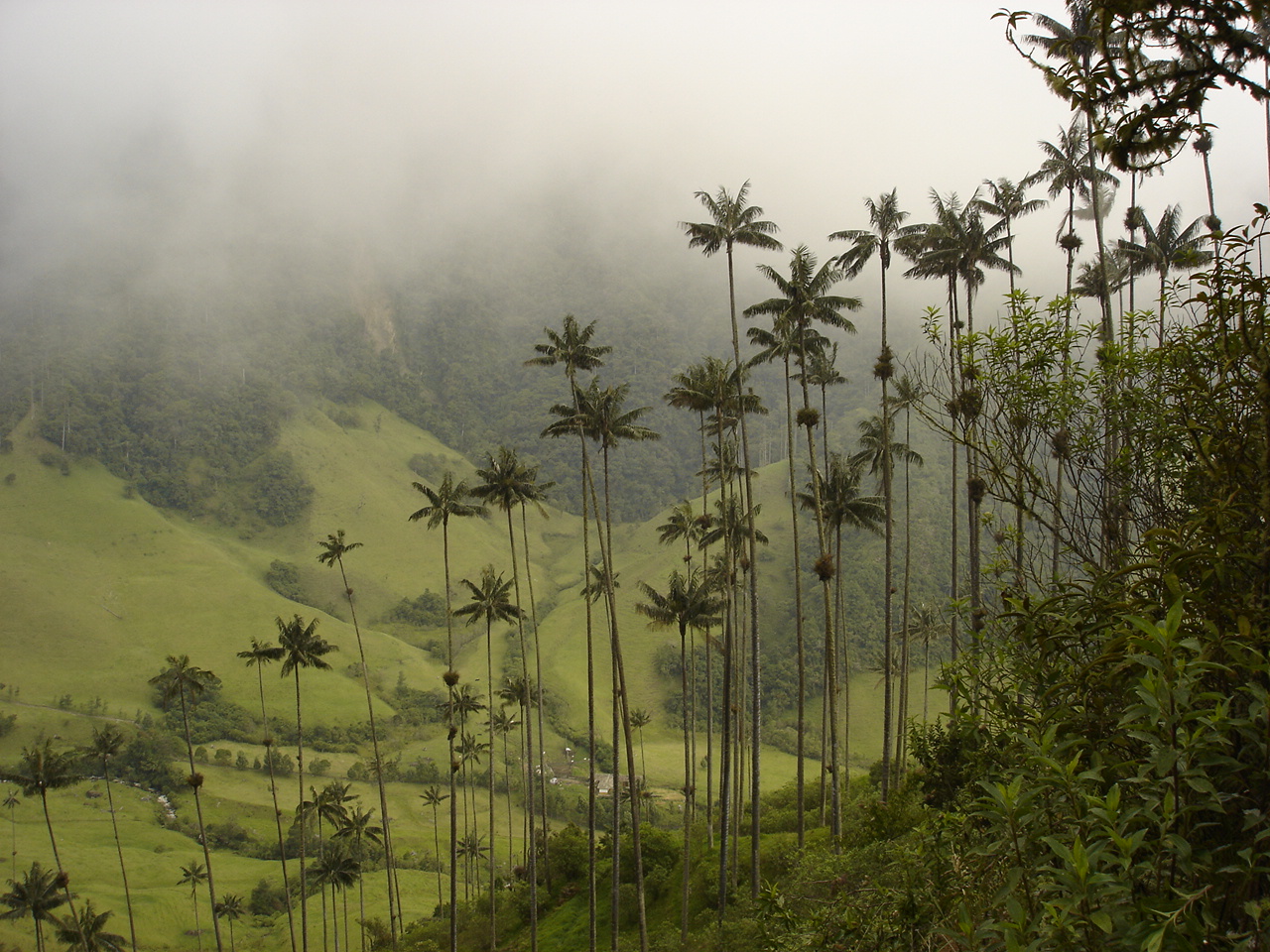Ceroxylon quindiuense on:
[Wikipedia]
[Google]
[Amazon]
''Ceroxylon quindiuense'', often called Quindío wax palm, is a 
File:Ceroxylon quindiuense - San Francisco Botanical Garden - DSC09840.JPG
File:La Carbonera 06.JPG
File:Palma de cerca del Quindío (Ceroxylon quindiuense) - Flickr - Alejandro Bayer (2).jpg
File:La Carbonera 11.JPG
File:Ceroxylon quindiuense, the world's tallest monocotyledon. (11211135095).jpg
File:Hoja palma de cera.jpg
palm
Palm most commonly refers to:
* Palm of the hand, the central region of the front of the hand
* Palm plants, of family Arecaceae
** List of Arecaceae genera
**Palm oil
* Several other plants known as "palm"
Palm or Palms may also refer to:
Music ...
native to the humid montane forests of the Andes
The Andes ( ), Andes Mountains or Andean Mountain Range (; ) are the List of longest mountain chains on Earth, longest continental mountain range in the world, forming a continuous highland along the western edge of South America. The range ...
in Colombia and Peru.

Description
This palm species can grow to a height of —or rarely, even as high as . It is the tallest recordedmonocot
Monocotyledons (), commonly referred to as monocots, (Lilianae ''sensu'' Chase & Reveal) are flowering plants whose seeds contain only one Embryo#Plant embryos, embryonic leaf, or cotyledon. A monocot taxon has been in use for several decades, but ...
in the world. The trunk is cylindrical, smooth, light colored, covered with wax; leaf scars forming dark rings around the trunk. The leaves
A leaf (: leaves) is a principal appendage of the stem of a vascular plant, usually borne laterally above ground and specialized for photosynthesis. Leaves are collectively called foliage, as in "autumn foliage", while the leaves, stem, ...
are dark green and grayish, long, with a petiole up to . Fruits are globose and orange-red when ripe, in diameter.
Taxonomy
''Ceroxylon quindiuense'' was described byGustav Karl Wilhelm Hermann Karsten
Gustav Karl Wilhelm Hermann Karsten (6 November 1817, in Stralsund – 10 July 1908, in Zoppot) was a German botanist and geologist.
Biography
Born in Stralsund, he followed the example of Alexander von Humboldt and traveled 1844-56 the norther ...
and published in ''Bonplandia'' (Hannover) 8: 70. (1860).
Etymology
Etymology ( ) is the study of the origin and evolution of words—including their constituent units of sound and meaning—across time. In the 21st century a subfield within linguistics, etymology has become a more rigorously scientific study. ...
:
Ceroxylon: generic name composed of the Greek
Greek may refer to:
Anything of, from, or related to Greece, a country in Southern Europe:
*Greeks, an ethnic group
*Greek language, a branch of the Indo-European language family
**Proto-Greek language, the assumed last common ancestor of all kno ...
words: kèròs = "wax" and xγlon = "wood", in reference to the thick white wax found on the trunks.
quindiuense: geographical epithet alluding to its location in Quindío.
Synonymy
A synonym is a word, morpheme, or phrase that means precisely or nearly the same as another word, morpheme, or phrase in a given language. For example, in the English language, the words ''begin'', ''start'', ''commence'', and ''initiate'' are a ...
:
* ''Klopstockia quindiuensis'' H.Karst
* ''Ceroxylon floccosum'' Burret
Ecology
It grows in large and dense populations along the central and eastern Andes of Colombia (rarely in the western Colombian Andes), with a disjunct distribution in the Andes of northern Peru. The elevational range of this species is between above sea level. It achieves a minimum reproductive age at 80 years. Wax palms provide habitats for many unique life forms, including endangered species such as the yellow-eared parrot ('' Ognorhynchus icterotis'').Vernacular names
Palma de cera, palma de ramo (both names in Colombia).Conservation
Populations of ''Ceroxylon quindiuense'' are threatened by habitat disturbance,overharvesting
Overexploitation, also called overharvesting or ecological overshoot, refers to harvesting a renewable resource to the point of diminishing returns. Continued overexploitation can lead to the destruction of the resource, as it will be unable to ...
and diseases. The fruit was used as feed for cattle and pigs. The leaves were extensively used in the Catholic celebrations of Palm Sunday
Palm Sunday is the Christian moveable feast that falls on the Sunday before Easter. The feast commemorates Christ's triumphal entry into Jerusalem, an event mentioned in each of the four canonical Gospels. Its name originates from the palm bran ...
; such leaves coming from young individuals which were damaged to death. That activity has been reduced severely in recent years due to law enforcement and widespread campaign. Felling of ''Ceroxylon quindiuense'' palms to obtain wax from the trunk also is an activity still going on in Colombia and Peru. The palm is recognized as the national tree of Colombia, and since the implementation of Law 61 of 1985, it is legally a protected species in that country.
Cultivation and uses
The wax of the trunk was used to makecandle
A candle is an ignitable candle wick, wick embedded in wax, or another flammable solid substance such as tallow, that provides light, and in some cases, a Aroma compound, fragrance. A candle can also provide heat or a method of keeping time. ...
s, especially in the 19th century. The outer part of the stem of the palm has been used locally for building houses, and was used to build water supply systems for impoverished farmers. It is cultivated as an ornamental plant in Colombia and California.
Gallery
References
{{Taxonbar, from=Q907665 quindiuense Trees of Colombia Trees of Peru Flora of the Andes Ornamental trees Nature conservation in Colombia Culture of Colombia National symbols of Colombia Plants described in 1859 Taxa named by Gustav Karl Wilhelm Hermann Karsten